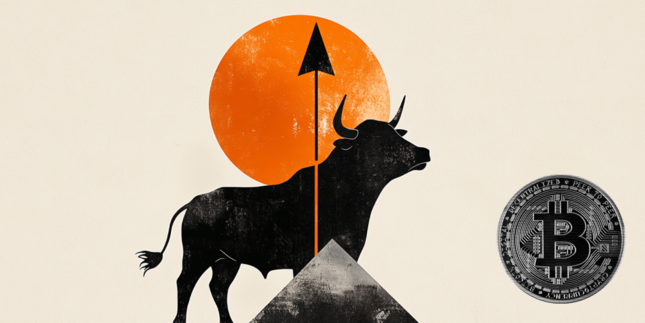- Pound Sterling advances to 1.2200 as the risk appetite of the market participants improved.
- The UK economy is likely to continue to face the wrath of high inflation and slowing demand.
- High inflation and slowing labor demand could trigger stagflation risks in the UK economy.
The Pound Sterling (GBP) recovered to near 1.2200 after discovering a cushion near 1.2100 as a mild correction in the US Dollar improved the appeal for risk-sensitive assets. Earlier, the GBP/USD pair was on the backfoot as investors were dumping risk-perceived assets due to a cautious market mood. The GBP/USD outlook remains vulnerable as risks of a recession in the United Kingdom have increased due to vulnerable economic prospects. The UK’s Manufacturing and Services PMI, which gauge the health of both sectors, have fallen into contraction territory, while strong labor demand appears to be fading.
The UK economy is seen losing strength amid uncertainty over the interest rate outlook ahead of the general elections. UK Prime Minister Rishi Sunak promised to halve inflation to around 5.3% by year-end, but the pause announced by BoE policymakers signals that the Prime Minister may fail to keep the word. For further action, investors will focus on the final S&P Global Manufacturing and Services PMI, which will be released next week.
Daily Digest Market Movers: Pound Sterling revives as risk-off mood eases
- Pound Sterling recovers posting a fresh six-month low near 1.2110 as the risk-aversion theme starts fading away while the broader bias is still bearish.
- The broader appeal for risk-perceived assets remains weak as rising oil prices and high inflation are deepening risks of a global slowdown.
- The GBP/USD pair remained under intense pressure as the UK economy is facing the headwinds of a stubborn inflation outlook and deepening recession risks.
- Unlike the US economy, the UK is struggling to cope with the consequences of higher interest rates.
- The Bank of England surprisingly paused its historically aggressive policy-tightening spell after raising interest rates 14 times in a row.
- The sudden interest rate pause conveyed that the UK economy is going through tough times. Before the pause, traders were expecting the interest rate peak at 5.75% as inflation in the UK is the highest among G7 economies.
- The BoE’s pause has elevated upside risks to inflation, further dampening the UK’s economic prospects. Labor demand has recently softened, but wage growth remains strong and this may keep inflation persistently high.
- Investors remain worried whether UK PM Rishi Sunak will fulfill his promise of halving inflation to around 5.3% by the year-end.
- Fears of a slowdown in the UK economy have deepened as the Services PMI shifted to contraction territory. Middle-class families have cut spending on services as high inflation squeezes real income.
- While the BoE’s interest rate pause highlighted the poor economic outlook, there is increasing evidence that the situation of the real-estate sector is improving as home-buyers see scope for lower mortgage rates ahead. UK’s property website Zoopla said the volume of inquiries for new homes rose by 12% over the past four weeks.
- Meanwhile, there are increasing risks of piling debt on the UK economy. Britain's Institute for Fiscal Studies (IFS) estimated on Thursday that there was a 90% chance that public borrowing in four years' time would be higher than the government's budget watchdog has forecast, Reuters reports.
- The US Dollar continues to capitalize on the risk-off market mood, a resilient US economy, and the hawkish stance of Federal Reserve (Fed) policymakers on interest rates.
- The US Dollar Index (DXY) is inches away from an 11-month high of around 107.00. The asset is expected to continue its four-day winning spell as investors shift focus to the Fed’s preferred inflation gauge.
- On Wednesday, the US Dollar strengthened further after the release of surprisingly positive US Durable Goods Orders data. Orders surprisingly rose by 0.2% against expectations of a 0.5% decline. In July, Orders contracted by a sharp 5.6%.
Technical Analysis: Pound Sterling holds 1.2200
Pound Sterling discovers buying interest near 1.2100 as the risk appetite of the market participants improves. The GBP/USD pair rebounds after refreshing a six-month low near the round-level support of 1.2100. The downside spell in the GBP/USD pair could continue to the psychological support of 1.2000 as the 200-day Exponential Moving Average (EMA) starts declining. Momentum indicators continue to trade in the bearish territory, warranting more downside for the pair.
Pound Sterling FAQs
What is the Pound Sterling?
The Pound Sterling (GBP) is the oldest currency in the world (886 AD) and the official currency of the United Kingdom. It is the fourth most traded unit for foreign exchange (FX) in the world, accounting for 12% of all transactions, averaging $630 billion a day, according to 2022 data.
Its key trading pairs are GBP/USD, aka ‘Cable’, which accounts for 11% of FX, GBP/JPY, or the ‘Dragon’ as it is known by traders (3%), and EUR/GBP (2%). The Pound Sterling is issued by the Bank of England (BoE).
How do the decisions of the Bank of England impact on the Pound Sterling?
The single most important factor influencing the value of the Pound Sterling is monetary policy decided by the Bank of England. The BoE bases its decisions on whether it has achieved its primary goal of “price stability” – a steady inflation rate of around 2%. Its primary tool for achieving this is the adjustment of interest rates.
When inflation is too high, the BoE will try to rein it in by raising interest rates, making it more expensive for people and businesses to access credit. This is generally positive for GBP, as higher interest rates make the UK a more attractive place for global investors to park their money.
When inflation falls too low it is a sign economic growth is slowing. In this scenario, the BoE will consider lowering interest rates to cheapen credit so businesses will borrow more to invest in growth-generating projects.
How does economic data influence the value of the Pound?
Data releases gauge the health of the economy and can impact the value of the Pound Sterling. Indicators such as GDP, Manufacturing and Services PMIs, and employment can all influence the direction of the GBP.
A strong economy is good for Sterling. Not only does it attract more foreign investment but it may encourage the BoE to put up interest rates, which will directly strengthen GBP. Otherwise, if economic data is weak, the Pound Sterling is likely to fall.
How does the Trade Balance impact the Pound?
Another significant data release for the Pound Sterling is the Trade Balance. This indicator measures the difference between what a country earns from its exports and what it spends on imports over a given period.
If a country produces highly sought-after exports, its currency will benefit purely from the extra demand created from foreign buyers seeking to purchase these goods. Therefore, a positive net Trade Balance strengthens a currency and vice versa for a negative balance.
Information on these pages contains forward-looking statements that involve risks and uncertainties. Markets and instruments profiled on this page are for informational purposes only and should not in any way come across as a recommendation to buy or sell in these assets. You should do your own thorough research before making any investment decisions. FXStreet does not in any way guarantee that this information is free from mistakes, errors, or material misstatements. It also does not guarantee that this information is of a timely nature. Investing in Open Markets involves a great deal of risk, including the loss of all or a portion of your investment, as well as emotional distress. All risks, losses and costs associated with investing, including total loss of principal, are your responsibility. The views and opinions expressed in this article are those of the authors and do not necessarily reflect the official policy or position of FXStreet nor its advertisers. The author will not be held responsible for information that is found at the end of links posted on this page.
If not otherwise explicitly mentioned in the body of the article, at the time of writing, the author has no position in any stock mentioned in this article and no business relationship with any company mentioned. The author has not received compensation for writing this article, other than from FXStreet.
FXStreet and the author do not provide personalized recommendations. The author makes no representations as to the accuracy, completeness, or suitability of this information. FXStreet and the author will not be liable for any errors, omissions or any losses, injuries or damages arising from this information and its display or use. Errors and omissions excepted.
The author and FXStreet are not registered investment advisors and nothing in this article is intended to be investment advice.
Recommended content
Editors’ Picks

EUR/USD Gains look limited by 1.1570 Premium
EUR/USD trades well on the defensive for the second day in a row, revisinting the mid-1.1300s on the back of the continuation of the upside impulse in the US dollar. The move followed firmer US PMI data and news indicating the White House may be considering tariff cuts on Chinese imports.

GBP/USD deflates to the sub-1.3300 area, USD bulls prevail
GBP/USD remained on the back foot Wednesday, slipping below the 1.3300 level as the Greenback gained further traction. The Dollar’s solid performance was supported by strong US data and fading concerns over a renewed escalation in the US–China trade dispute.

Gold corrected extreme conditions, struggles around $3,300
Gold extended its decline on Wednesday, slipping below the $3,300 mark per troy ounce in response to reports from the media suggesting the Trump administration is weighing tariff reductions on Chinese goods, a news that revived hopes of easing trade tensions and reduced demand for the yellow metal as a safe-haven asset.

Bitcoin bullish momentum builds as premium exceeds 9% for first time in three months
Bitcoin price is extending its gains, trading above $94,000 at the time of writing on Wednesday, following a two-day rally of 9.75% so far this week. BTC rally gathers momentum as trade war fears ease, following US President Donald Trump’s downplaying of tensions with China.

Five fundamentals for the week: Traders confront the trade war, important surveys, key Fed speech Premium
Will the US strike a trade deal with Japan? That would be positive progress. However, recent developments are not that positive, and there's only one certainty: headlines will dominate markets. Fresh US economic data is also of interest.

The Best brokers to trade EUR/USD
SPONSORED Discover the top brokers for trading EUR/USD in 2025. Our list features brokers with competitive spreads, fast execution, and powerful platforms. Whether you're a beginner or an expert, find the right partner to navigate the dynamic Forex market.



